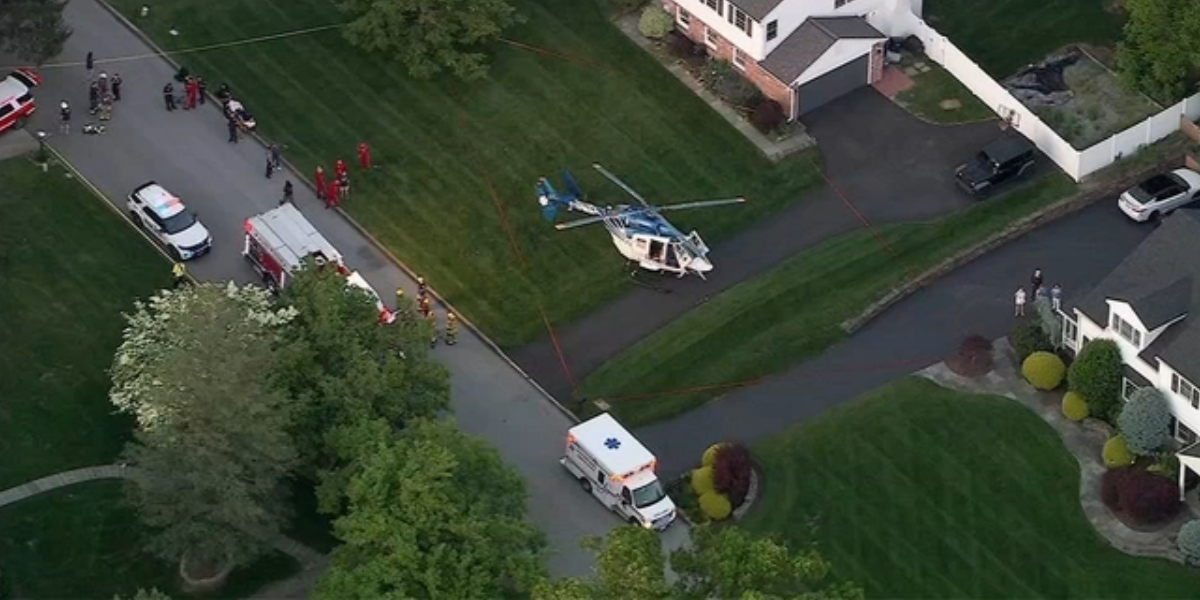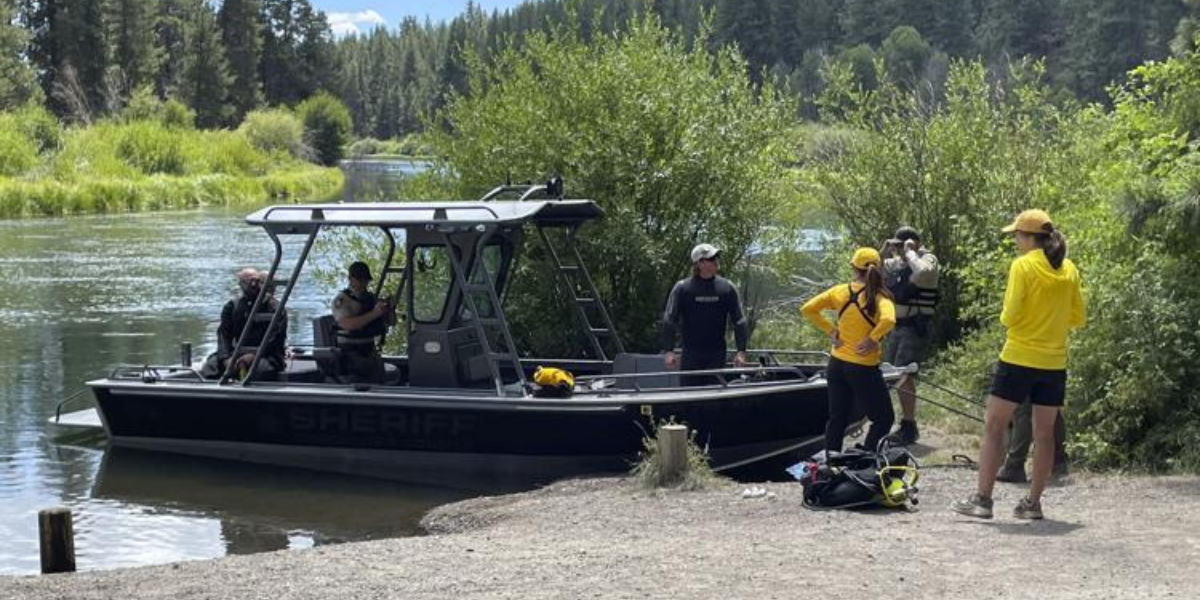Whitemarsh Township, PA — A medical helicopter took a sudden and dramatic plunge Monday evening, but thanks to the skill of its pilot, all aboard survived without injury. Investigators are now working to understand what caused the Euro copter BK 117 to make an emergency landing in a residential front yard, while the helicopter’s tail rotor was found some distance away.
Sudden Drop Mid-Flight Sparks Emergency
The helicopter departed from Penn Presbyterian Medical Center, heading to Wings Field in Blue Bell for refueling before transporting a patient from Chester County Hospital. However, just five minutes after takeoff, tracking data from Flightradar24 revealed the aircraft dropped over 1,000 feet in less than a minute before vanishing from radar.
Residents nearby witnessed the unsettling descent but soon marveled as the pilot expertly brought the aircraft down safely on the lawn of a home in Whitemarsh Township.
Pilot’s Quick Thinking Prevents Tragedy
Remarkably, all three crew members aboard survived the sudden emergency landing, and no injuries were reported among residents on the ground. Aviation experts have praised the pilot’s response in what many call a potentially deadly situation.
Arthur Wolk, a longtime aviation attorney and pilot, explained the critical nature of losing a helicopter’s tail rotor — a rare but dangerous failure.
“If a helicopter loses its tail rotor, it’s an immediate crisis. The pilot must reduce torque and land as quickly as possible, which this pilot did exceptionally well,” Wolk said.
Tail Rotor Found Separate from Crash Site
Neighbors informed CBS News Philadelphia that the helicopter’s tail rotor was discovered a short distance from the landing site. This discovery supports the theory that a tail rotor failure may have caused the emergency.
Wolk noted that tail rotor failure can stem from metal fatigue or maintenance issues. Investigators will likely examine the aircraft’s logbooks for clues.
What’s a Tail Rotor and Why Does It Matter?
The tail rotor, also known as the anti-torque rotor, prevents the helicopter’s body from spinning uncontrollably. Losing it removes the pilot’s ability to stabilize the aircraft’s rotation, making safe landing a significant challenge.
Wolk highlighted the importance of finding a suitable landing spot immediately:
“Whether it’s a front lawn, a golf course, or any open area, you want to get the helicopter down as fast as possible.”
FAA and NTSB Launch Investigation
The helicopter was manufactured in 1997, according to FAA records. The National Transportation Safety Board (NTSB) and Federal Aviation Administration (FAA) are jointly investigating the incident.
The NTSB is expected to issue a preliminary report within 30 days to shed more light on what happened and prevent similar emergencies in the future.
Community Reaction
Residents of Whitemarsh Township expressed relief and admiration for the pilot’s skill.
Yessika Valdez, a neighbor, said, “It was scary to see the helicopter come down like that, but I’m so thankful no one was hurt. The pilot did an incredible job.”
Looking Ahead
While the cause remains under investigation, this event highlights the dangers helicopter pilots face and the importance of quick decision-making under pressure.
Officials encourage anyone with information related to the incident to contact local authorities.
This emergency landing serves as a powerful reminder of the bravery and professionalism of first responders and pilots who work tirelessly to keep people safe — even when the unexpected happens.
If you live nearby and captured photos or videos of the event, consider sharing them with investigators to assist with the ongoing inquiry.
“This article was written by Mathew Owen. AI tools were used lightly for grammar and formatting, but the ideas, words, and edits are all mine.”


 by
by 

